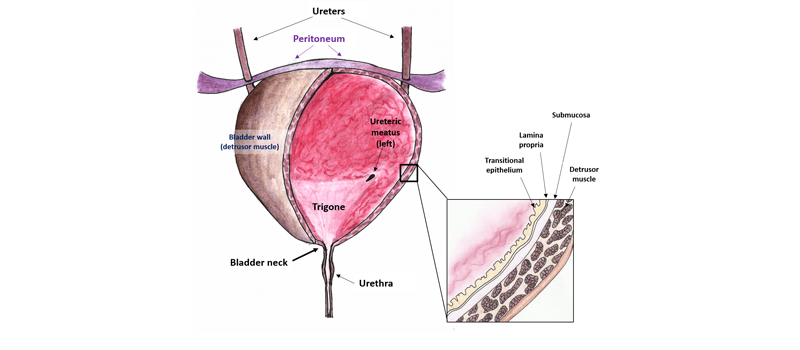
Uterine Cancer is a type of cancer that begins in the uterus. The uterus is the hollow, pear-shaped pelvic organ where fetal development occurs. Uterine Cancer begins in the layer of cells that form the lining (endometrium) of the uterus. Uterine Cancer is sometimes called Endometrial cancer. Other types of cancer can form in the uterus, including uterine sarcoma, but they are much less common than endometrial cancer.
Uterine Cancer is often detected at an early stage because it frequently produces abnormal vaginal bleeding. If endometrial cancer is discovered early, removing the uterus surgically often cures Uterine Cancer.
The uterus is a hollow, pear-shaped reproductive organ in the pelvis where a baby grows during pregnancy. There are two types of uterine cancer.
The most common uterine cancer is endometrial cancer, which begins in the layer of cells that form the inner lining (endometrium) of the uterus. Endometrial cancer is mostly found in postmenopausal women and diagnosed at an early stage because it frequently causes early abnormal vaginal bleeding. If endometrial cancer is diagnosed early, surgical removal often cures endometrial cancer.
Uterine sarcoma is a much rarer type of uterine cancer that forms in the muscles of the uterus. Women who have had pelvic radiation are at higher risk of developing uterine sarcoma. Treatment usually includes surgery, chemotherapy, or radiation, because it is more aggressive in many cases.
The cause of uterine cancer is multifactorial, and these factors can increase your risk of developing this disease. What is known is that something occurs which leads to a genetic mutation within the cells that form the inner lining of the uterus (endometrium) or within the cells that form the uterine muscle. This genetic mutation transforms healthy cells into abnormal cells, which then grow and multiply at an uncontrolled rate and do not die after a normal time span. There can be multiple mutations and some are influenced more by excess estrogen and being overweight than others. The abnormal cancer cells build up into a mass (tumor) and can separate from the uterus to invade other parts of the body (metastasis)
Signs and symptoms of uterine cancer may include:
Uterine cancer cells usually do not show up in the results of a Pap smear, which screens for cervical cancer. In order to diagnose uterine cancer, a sample of endometrial tissue must be removed and checked under a microscope for cancer cells. This can be done using one of the following procedures:
A thin, flexible tube resembling a straw is inserted through the cervix and into the uterus to obtain tissue from the inner lining (endometrium) of the uterus. A pathologist views the tissue under the microscope to look for cancer cells